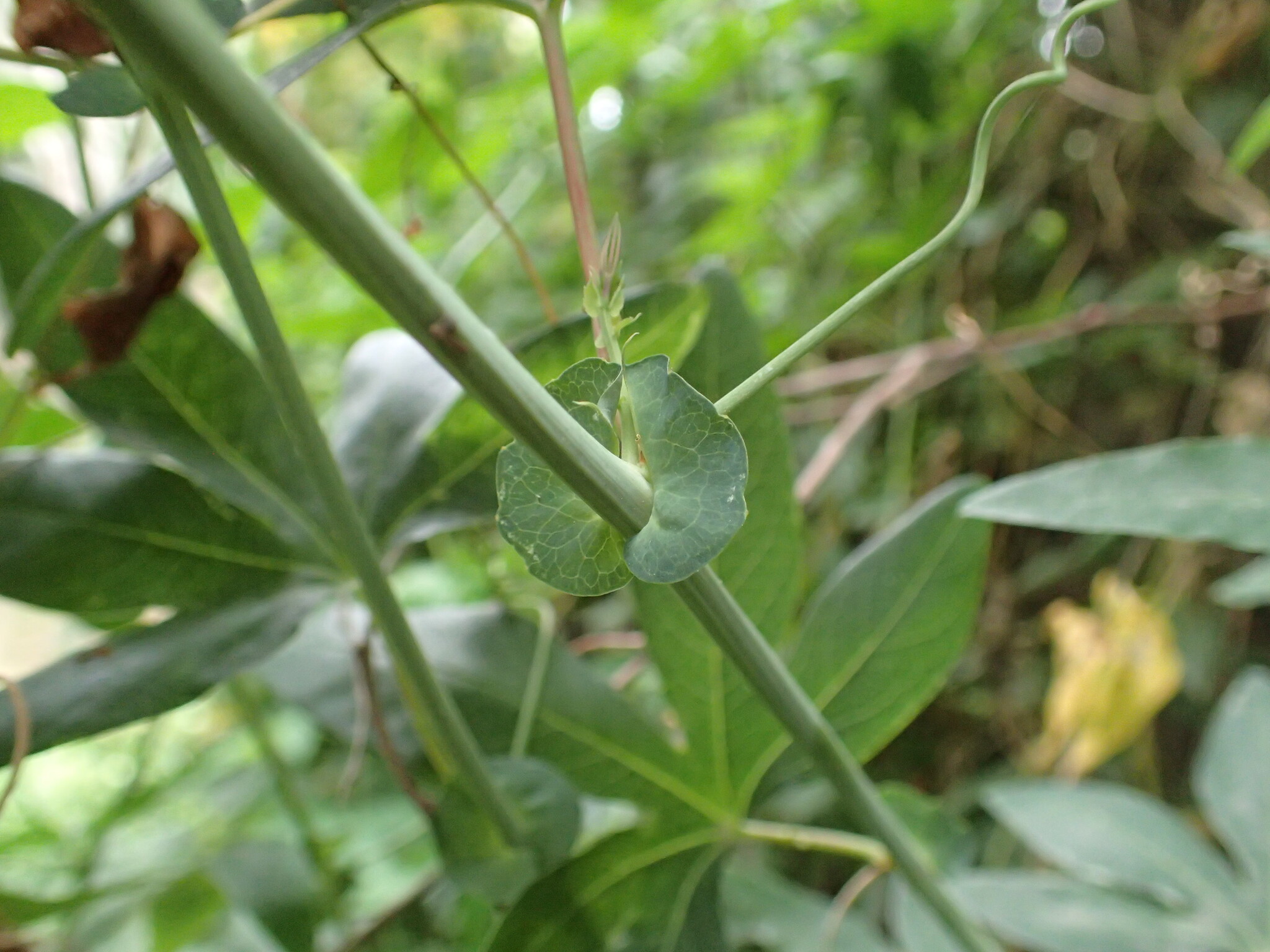
Hairless climber with angled stems. Leaves unlobed at first but soon with 3, then 5(-7) when mature, waxy; margins without teeth; stipules ovate. Leaf stalk with 2-4 glands near the centre. Flowers with sepals and petals white to pink, of similar length and appearance; late summer to autumn. Corona of 4 rows of filaments, blue at the tip, white in the centre and purple at the base. Fruit yellow to orange, to about 6 cm long.
South America
Has been hybridised with several species, notably P. racemosa Brot., Red Passion Flower, to produce a range of flower colour forms.
Grows well in cool areas.
Sometimes used as a stock for other species and occasionally naturalised in NSW, Qld and WA but will produce suckers.
Source: (1997). Passifloraceae. In: . Horticultural Flora of South-eastern Australia. Volume 2. Flowering plants. Dicotyledons. Part 1. The identification of garden and cultivated plants. University of New South Wales Press.

Passiflora caerulea 'Empress Eugenie'
Listed by Hazelwood's Nursery, Epping, NSW in the 1950s is sometimes listed under its former name 'Impératrice Eugénié' but is now considered best named P. ×belottii Pépin or P.×alato-caerulea although there is uncertainty as to whether the parentage of the latter two species is the same. It was originally described c. 1850 as a hybrid between P. alata C. Curtis from NE Peru and E Brazil and P. caerulea. It produces long-lasting, large, fragrant flowers and no suckers (P. caerulea has suckers).